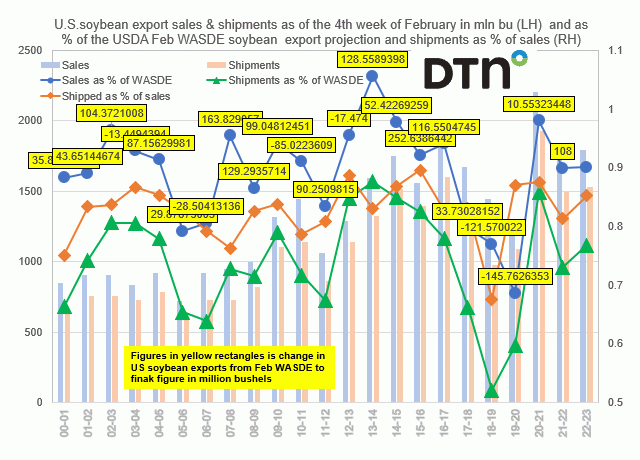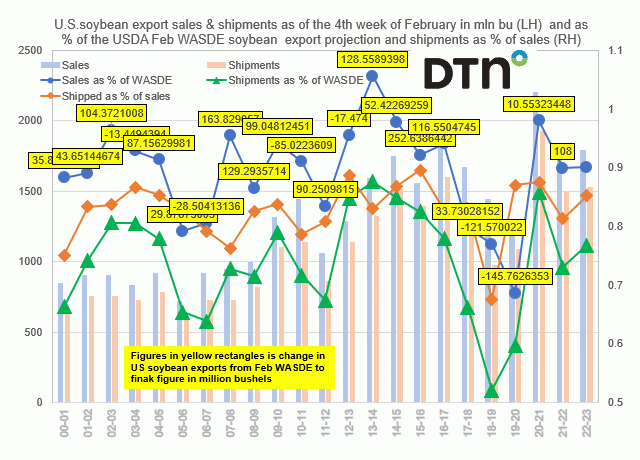Fundamentally Speaking
Vegoil Prices Buoyed by Curtailment Sunoil shipments
Vegetable oil prices had already scored new all-time highs this year even before hostilities broke out in the Black Sea region and that has been akin to throwing gasoline on a raging fire.
Palm oil is the world's most produced and consumed vegetable oil, and that market has seen record highs over the past few weeks.
Supplies remain limited by just a modest increase in production forecast this year based on high fertilizer costs and labor constraints in Malaysia, increasing biodiesel mandates in major producer Indonesia and the easing of pandemic restrictions in many countries that will boost palm and other vegoil use for cooking purposes.
Similar situation for soybean oil which made new all-time highs this week boosted by some buoyant forecasts for renewable biodiesel demand and just a lot of now maskless consumers going out to restaurants for some fried foods that they do not often prepare at home.
P[L1] D[0x0] M[300x250] OOP[F] ADUNIT[] T[]
Now to this add the disruption of sun oil exports out of the Black Sea that will lead to global buyers shopping for alternatives, including U.S. soybean oil as sunflowerseed oil accounts for about 10.2% of all vegetable oils produced and close to 15% of all vegoils exported in the world.
This matters in a world where palm oil production which gets a lot of negative publicity not keeping up with world demand and supplies of soybean oil, the second most produced oil and its exportable supplies now far lower than had been expected given huge drop in forecasted South American production.
So now attention is being focused on availability of other vegoils like rapeseed, cottonseed and sunseed oil.
With regard to the latter, production and exports are essentially dictated by both Russia and Ukraine.
This chart shows sunseed oil output out of Russia and Ukraine as a percent of world production on the right-hand axis and their exports as a percent of the global total on the left-hand axis.
It indicates their combined share of global sunoil output at 60% and that of exports at 78%.
The fact is that for importing countries hungry for whatever wheat, corn and sunoil supplies are around, exports out of the Black Sea region are completely gone now for what probably will be an extended period of time due to war and sanctions.
Now attention is turning to the winter crops out in the fields in both countries that up to now were doing well, but who is going to harvest them and then turnaround and sow the spring crops.
2022/23 Ukrainian and Russian grain and oilseed production is increasingly in jeopardy, throwing whole new layer of uncertainty into what already are frenzied markets.
(c) Copyright 2022 DTN, LLC. All rights reserved.





Comments
To comment, please Log In or Join our Community .